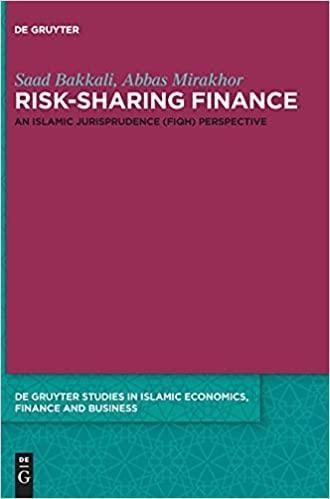Question
Chapter 23 Mini-Case : The Economic Ordering Quantity (EOQ) model is a concise method for maximizing the value of a companys inventory. It allows managers
Chapter 23 Mini-Case:
The Economic Ordering Quantity (EOQ) model is a concise method for maximizing the value of a companys inventory. It allows managers to quickly assess the overall costs of their inventory by specifying the costs of both ordering and carrying inventory. While there are other, more in-depth methods of inventory evaluation, this model provides a solid overview of inventory-related costs. This Mini Case activity allows you to use the EOQ model to evaluate the inventory of a company and make recommendations based on your findings.
MINI CASE
Assume you have just been hired as a financial analyst by Tennessee Sunshine Inc., a mid-sized Tennessee company that specializes in creating exotic sauces from imported fruits and vegetables. The firm's CEO, Bill Stooksbury, recently returned from an industry corporate executive conference in San Francisco, and one of the sessions he attended was on the pressing need for smaller companies to institute corporate risk management programs. Since no one at Tennessee Sunshine is familiar with the basics of derivatives and corporate risk management, Stooksbury has asked you to prepare a brief report that the firm's executives could use to gain at least a cursory understanding of the topics.
To begin, you gathered some outside materials on derivatives and corporate risk management and used these materials to draft a list of pertinent questions that need to be answered. In fact, one possible approach to the paper is to use a question-and-answer format. Now that the questions have been drafted, you have to develop the answers. Please answer all questions h thru i as correctly and accurate as possible. Please!
h. Describe how commodity futures markets can be used to reduce input price risk.
i. It is January, and Tennessee Sunshine is considering issuing $5 million in bonds in June to raise capital for an expansion. Currently, the firm can issue 20-year bonds with a 7% coupon (with interest paid semiannually), but interest rates are on the rise and Stooksbury is concerned that long-term interest rates might rise by as much as 1% before June. You looked online and found that June T-bond futures are trading at 111'25. What are the risks of not hedging, and how might TS hedge this exposure? In your analysis, consider what would happen if interest rates all increased by 1%.
I need all question answered h thru i Please! Correctly and as accurate as possible. Like ASP!
Step by Step Solution
There are 3 Steps involved in it
Step: 1

Get Instant Access to Expert-Tailored Solutions
See step-by-step solutions with expert insights and AI powered tools for academic success
Step: 2

Step: 3

Ace Your Homework with AI
Get the answers you need in no time with our AI-driven, step-by-step assistance
Get Started


